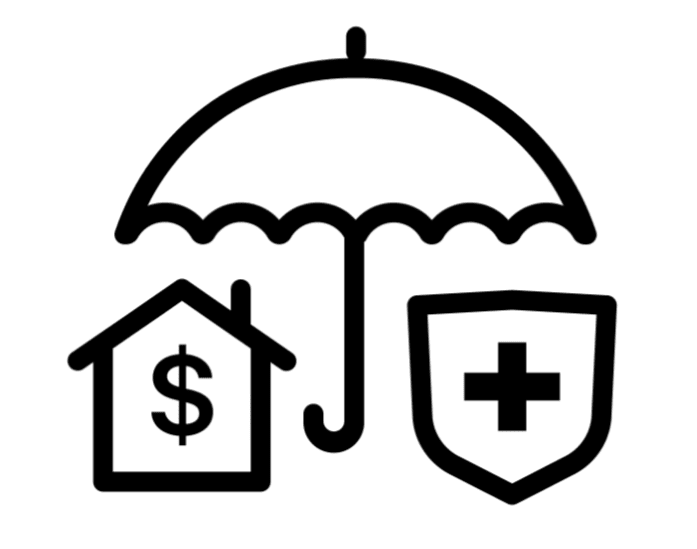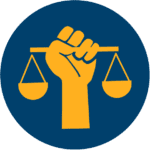Charles Brennan provided testimony in support of House Bill 24-1129, Protections for Delivery Network Company Drivers. CCLP is in support of HB24-1129.
Recent articles
CCLP testifies in support of TANF grant rule change
CCLP's Emeritus Advisor, Chaer Robert, provided written testimony in support of the CDHS rule on the COLA increase for TANF recipients. If the rule is adopted, the cost of living increase would go into effect on July 1, 2024.
CCLP testifies in support of updating protections for mobile home park residents
Charles Brennan provided testimony in support of House Bill 24-1294, Mobile Homes in Mobile Home Parks. CCLP is in support of HB24-1294.
CCLP’s legislative watch for April 5, 2024
For the 2024 legislative session, CCLP is keeping its eye on bills focused on expanding access to justice, removing administrative burden, preserving affordable communities, advocating for progressive tax and wage policies, and reducing health care costs.
COVID-19 crisis underscores the critical role of ‘safety-net’ programs

Amid the quarantines, illnesses, potential wage loss and anxiety associated with the coronavirus (or COVID-19), there’s clearly no “upside” to the epidemic. But the public health emergency does exemplify why safety-net programs are important — and can reveal how these programs and policies can be adjusted to serve Coloradans facing economic instability.
The emergency also shows why these programs play a critical role and could help Colorado’s residents through crises — whether related to illness or natural disasters like fires and floods as well as systemic circumstances beyond Coloradans’ control.
Looking at CCLP’s Focus Areas – food, health, housing and income – there are structures in place that will help the state manage this crisis, as well as gaps that may hamper those efforts. Two of Colorado’s most commonly used safety-net programs, Health First Colorado and Supplemental Nutrition Assistance Program (or SNAP) give Colorado communities the basic building blocks needed to manage and overcome problems that materialize during health crises and economic downturns, as well as the obstacles inherent in a system that disadvantages Coloradans of color and rural Coloradans.
Food – Events like the COVID-19 cause disruption to work when parents need to stay home with their children or slowdowns result in layoffs or fewer shifts. Coloradans who may find themselves temporarily out of work and without sufficient income can enroll online through Colorado PEAK without leaving home in the Supplemental Nutrition Assistance Program (or SNAP). The program ensures that families and individuals have funds to purchase groceries, with the average benefit being about $1.40 per meal, per person.
Unfortunately, hundreds of thousands of Coloradans in food-insecure households don’t access SNAP, leaving Colorado ranked 44th in terms of enrollment of eligible residents. The federal government funds SNAP dollars, and administrative costs are split between local, state and federal governments. CCLP is currently working with partners in the Colorado Blueprint to End Hunger coalition to improve SNAP outreach to one group that is under-enrolled, community college students.
Health – Coverage to identify and treat illness is an obvious need during a health crisis. Health First Colorado, the state’s Medicaid program, provides health coverage for over a million Coloradans, including people in nursing homes, people with disabilities, working adults, and – with the Child Health Plus (CHP+) program, close to half of Colorado children. Colorado expanded Medicaid eligibility in 2013 – providing hundreds of thousands of adults with incomes less than 133 percent of the Federal Poverty Level (FPL) with health insurance for the first time, with that coverage funded almost entirely by federal funds.
The 2013 expansion was a major step in the right direction and puts Colorado in a much better position than non-expansion states to address and contain COVID-19. Those non-expansion states universally have high rates of people without health insurance, leaving them at a disadvantage when identifying the spread of an illness is critical. The epidemic also makes it crystal clear why Medicaid block grants, which either limit expenditures per enrollee or limit enrollment, would make it fiscally impossible for a state to provide the level of care needed to all who need it during a crisis.
Short-term approaches in other states include increasing outreach to older participants and encouraging the use of telehealth for Medicaid enrollees, an effort we’d urge the state to adopt. Earlier this week, Gov. Polis also took the positive step of directing all health insurers in the state to waive co-pays, deductibles and other charges for those showing symptoms associated with the virus.
Even with expansion, however, CCLP has found that coverage rates may be declining. That is why we support House Bill 1236, which would use the regular tax-filing process to inform Coloradans of their eligibility for Medicaid, CHP+ and tax credits through the state exchange, Connect for Health Colorado. Bringing in those eligible Coloradans would help with future events, even if not for the current crisis.
Housing – In light of the virus scare, government officials in San Francisco and San Jose recently took action to halt evictions for tenants who are unable to pay rent due to coronavirus or following government-recommended coronavirus precautions. If the virus spreads, as expected, Colorado officials should seriously consider similar action – especially considering the high number of evictions already taking place in the state.
Income supports – Regardless of the national situation, paid sick leave policies support economic security, better individual health and better public health, but fewer than a dozen states provide paid sick leave. While there are no legislative proposals are active to require Colorado employers to give workers paid time off when they are sick, some members of Congress are trying to pass a new version of a sick leave bill and expand it to add 14 days of immediately available paid sick leave in the event of a public health emergency.
Even if the coronavirus doesn’t have a significant effect on the economy, and the spread isn’t nearly as devastating as public health officials fear, the aforementioned policies and programs ensure the health and well-being of Coloradans — whether they are facing the coronavirus, temporary setback, a recession or struggling with systemic challenges.
Please reference the Colorado Department of Public Health and Environment’s website for more resources and information about coronavirus disease 2019.
CCLP’s Health Program Director assisted with this posting.





